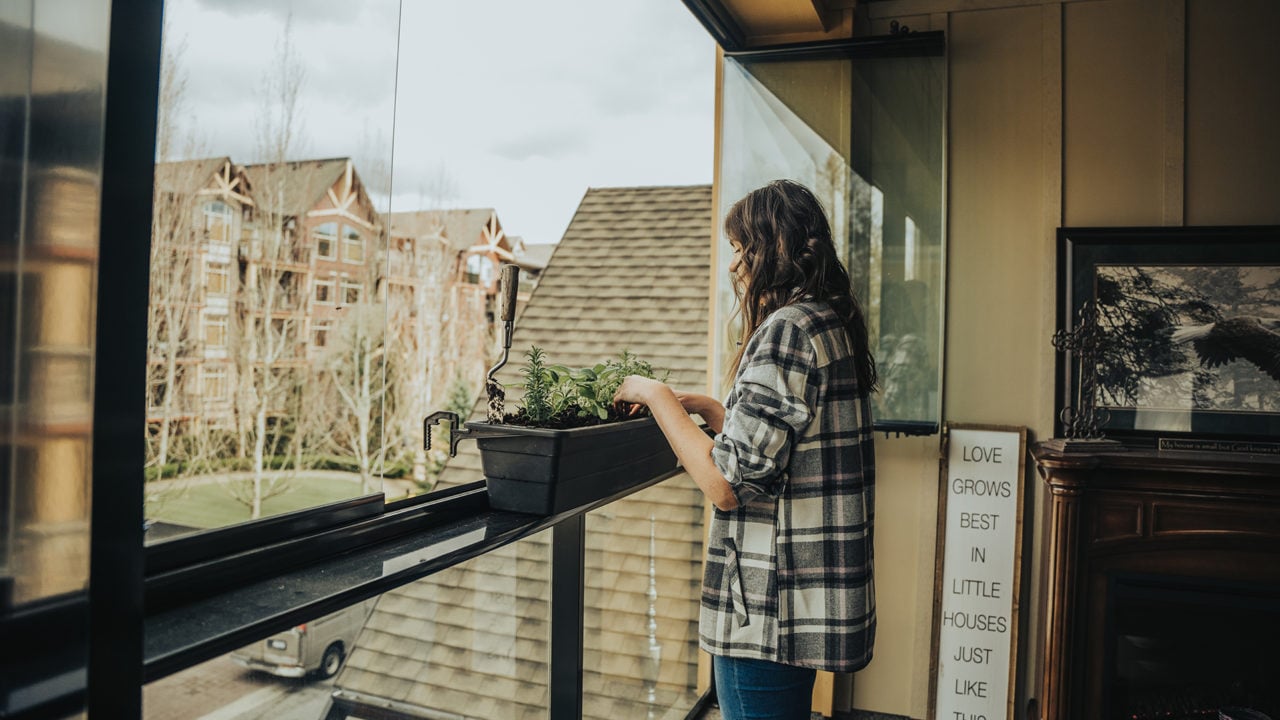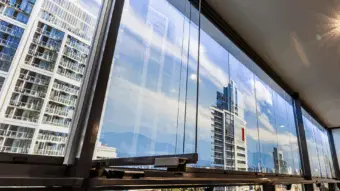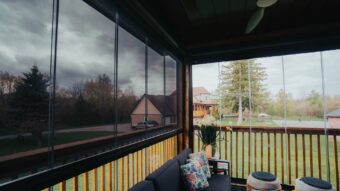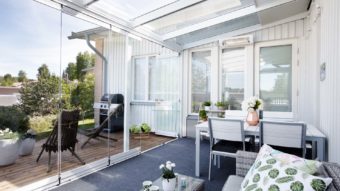
4 ways balcony glazing promotes a sustainable lifestyle
Energy savings is a hot topic, and it deserves our attention as well. The world is in the middle of an energy crisis that is impacting everyone. Being at home has also become a familiar concept to many in the past years, but what about the energy costs that are now involved with being at home? How can we move towards more energy-efficient living, without compromising on comfort?
With construction being one of the biggest industries in the world, ever-expanding, a move towards more energy and cost-effective living starts from the foundation of a building – construction companies, architects, builders, contractors.
Sustainable building science focuses on architectural and componential elements of a building, that help to balance its carbon footprint, and by integrating elements that will actually improve the sustainable efficiency of the building.
PhD Kimmo Hilliaho, current Head of Marketing & HR at Lumon Group, discusses with us 4 core, concrete ways in which balcony glazing helps to promote sustainable lifestyle.
1. Balcony glazing is one of the only sustainable additions to a building that actually adds to the comfort of living
If we consider modifications or elemental components of an apartment or a building, very few are such which are a sustainable choice, but also impactfull in adding to the comfort of life.
If we consider installing an energy-efficient faucet which helps us to save on water consumption, for example, although this is a sustainable act, it hardly adds to the comfort of our living. From a sustainability front, this is of course a smart choice, but the duality between comfort of living and sustainability is still missing.
A glazed balcony, based on simulation calculations in apartment buildings in Finland, saves 3-10% on energy costs. Not only that, but the resident of the home actually gets additional space to live in, which can be limited in apartment residences. Essentially, the owner is adding to the comfort of living of the residents as well as the value of the apartments, at the same time acting sustainably and profitably. The balcony becomes a space which passively collects the energy of the sun. Sustainable living is not only about the benefit of energy savings, but the benefits that reach beyond that.
2. In an apartment building with 50 units equipped with balcony glazing, the monetary savings can be up to 16K per annum
Based on calculations, the energy saving benefits can be quite significant. Of course, there are variable factors which impact the calculations, but we can use this as an overall hypothesis. A very conservative estimate is that 250 kilowatt hours of energy are saved per year, per balcony. In an apartment building with 50 units, this could mean energy savings monetarily of up to 16K euros.
The environmental footprint of the balcony is also paid back in as a little as 3 years. That means that the excess environmental and energy savings benefits received after the pay-back time are all possibilities for the building owner to make ‘free’ investments in other aspects of the building.
3. Glass and aluminum are fully recyclable materials
Glass and aluminum are both 100% recyclable materials, and the footprint of them is, as a result, less than in some other building materials.
The environmental footprint of a balcony glazing system can be compensated in as little as three years. Three years for an environmental footprint to be compensated for a product is really not a lot. Especially considering that the product is benefitting the building and its residents at every moment, every day.
Balcony glazing also serves as a protective element of the facade, so that the need for repairs are minimized. Often, buildings are made of concrete, and if we can reduce the need for repairs with a material that is rather CO2 -intensive, we take a step towards sustainability. There is also a financial benefit, which is that less money is actually spent on repairing the facade. With balcony glazing, the lifespan of the balcony doubles in time.
4. Balcony glazing supports a sustainable lifestyle
Living a sustainable life starts with making sustainable choices. The balcony is an opportunity for residents to also support a self-sufficient lifestyle by for example growing various herbs and vegetables on the balcony. Especially in regions where winter is long, the balcony space can significantly increase the growing time for plants.
In volatile times, people have the tendency to want to resort to doing as much as they can at home, or even having the possibility to do so, and a glazed balcony makes this possibility come alive.
In addition, for those with limited mobility, the balcony space is a great way to get outdoors without actually having to walk far. A glazed balcony is really an all-inclusive solution, because the resident can choose what to do with the space – we hope something, that will improve sustainable life and well-being, concludes Hilliaho.
-
Lumon Balcony Glazing into Your Show Suite: Costs, Benefits, and Process
Read more…Standing out in real estate is more important now than ever. How well you can capture a buyer’s interest early can make or break your sales momentum, and that’s the case regardless of whether your project is a mid-rise in a growing neighborhood or a large-scale urban development in a high-traffic area. The best way to stand out against the competition is to offer unique features that check off must-haves on your buyers’ checklists.
-
What Made This Homeowner Say ‘Yes’ to a Major Outdoor Upgrade
Read more…When Adam Chan set out to enhance his outdoor space in Brampton, Ontario, he was looking for more than just a functional glass enclosure. He wanted something beautiful, durable, and thoughtfully designed, too.
-
Do Sunrooms Contribute to the Gross Floor Area (GFA)?
Read more…Installing a sunroom is a popular way to enjoy more of your outdoor surroundings while staying protected from the elements. Whether it’s sipping your morning coffee in a light-filled space or hosting dinner without worrying about sudden weather changes, a sunroom can feel like a natural extension of your home.


